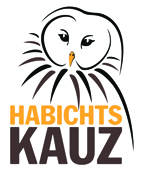
Vetmeduni: Savoyenstraße 1a, 1160 Wien
Ural owl
Ural owl resettlement
The resettlement of the Ural owl is led by a team of researchers headed by ornithologist Richard Zink at the Austrian Ornithological Centre at "Vetmeduni" Vienna. The goal is the "Come Back" of the big owl into the forests of Austria. A new occurrence in the alps creates an essential link between the populations south (Slovenia, Italy) and north (Germany, Czech Republic) of the Alpine republic. Individual owls migrating between these populations ensure gene flow within the European metapopulation - the survival of the rare large owl can thus be ensured in the long term.
The designation of protected areas and the gradual conversion to sustainable forest management improved the living conditions for the Ural owls in Austria. Based on this, the project was requested by an international delegation of experts in autumn 2006. The Austrian release sites were selected for the protected areas "Wienerwald Biosphere Reserve" and the "Wilderness Dürrenstein", which offer the newcomers optimal survival conditions due to their ecologically particularly valuable forest stands. The project is based on the successful reintroduction that has taken place in the Bavarian Forest National Park (D) in the last century.
16 years after the first release of Ural owls in 2009, successes can already be recorded in the reintroduction project. The current population of Ural owls in the reintroduction area is estimated at about 50 territories. Since 2011, the reintroduced Ural Owls have also been breeding successfully in the open. The breeding success is subject to annual fluctuations, which are based on mouse gradations. Since then, at least 278 young Ural owls have been hatched in the wild and 545 released (as at end of 2024). You can report observations of Ural owls directly to the project team on our website.
Based on these successes, the focus of the project is now on increasing the genetic diversity of the Ural Owl population. This should ensure the long-term existence of the reintroduced population. Together with 25 breeding partners throughout Central Europe and around 50 breeding pairs, the project team is working towards this goal.
In order to give some assistance to the Ural owl, which does not build its own nests, approximately 550 nesting boxes have so far been installed in suitable forests in Eastern Austria with the help of a large number of landowners. You are a landowner with forest ground, you are enthusiastic about the Ural owl and would like to enable the installation of a nesting box? Or do you have time and want to support the project in spring by regularly checking one of our nesting boxes?
Get in contact with the project team - we look forward to meeting you!
https://www.citizen-science.at/en/projects/ural-owl#sigProId35c6525caf
This project fulfils version 1.1 of the quality criteria for citizen science projects on Österreich forscht.
- animals


